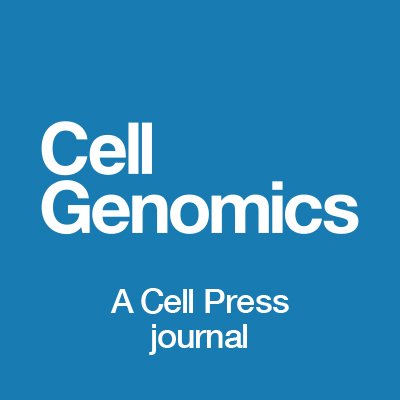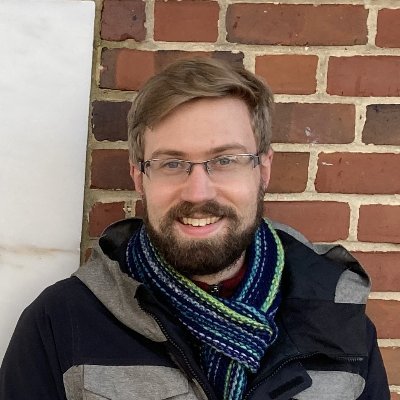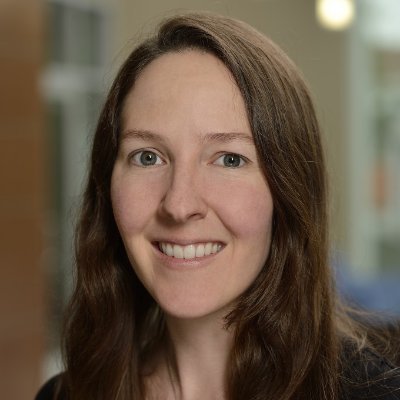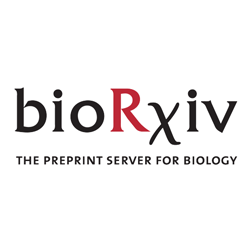
Josh Popp
@popp_josh
Followers
285
Following
659
Media
12
Statuses
146
Computational Genomics PhD Student Battle Lab, JHU BME
Joined December 2019
So excited to share my first paper, out in final form at @PLOSGenetics! Co-led w the amazing @reem_elo, we used single-cell RNA-seq to find hundreds of dynamic eQTLs in differentiating cardiomyocytes (1/3)
journals.plos.org
Author summary Many complex traits and diseases are associated with genetic variants which are suspected to regulate the expression levels of nearby genes. However, we are still unable to identify...
4
30
123
Cell type and dynamic state govern genetic regulation of gene expression in heterogeneous differentiating cultures
cell.com
Popp et al. generate dozens of cell types from 53 human iPSC lines in order to characterize the dynamic genetic regulation of gene expression across early stages of cellular differentiation. Access...
0
6
12
IMO the defining trait of an enhancer or regulatory element is a change in sequence causing a change in gene expression. Really cool that we can use stem cells to systematically accrue evidence for these effects in new, previously-inaccessible contexts.
Our study led by @popp_josh is up! Context-specific genetic regulation of gene expression in heterogeneous differentiating cultures.
0
2
13
Our study led by @popp_josh is up! Context-specific genetic regulation of gene expression in heterogeneous differentiating cultures.
Cell type and dynamic state govern genetic regulation of gene expression in heterogeneous differentiating cultures
0
7
28
Cell type and dynamic state govern genetic regulation of gene expression in heterogeneous differentiating cultures
cell.com
Popp et al. generate dozens of cell types from 53 human iPSC lines in order to characterize the dynamic genetic regulation of gene expression across early stages of cellular differentiation. Access...
1
11
33
Switching to training transGRNS on perturbation expts with RNAonly read outs will provide some improvements but u still will be training models on misspecified & underspecified inputs, even with "causal" modeling methods. Many issues identified in the paper will continue. 6/
1
2
8
Thrilled to share that I am joining the Department of Human Genetics @EmoryMedicine as an Assistant Professor! I was an undergraduate at Emory before, and it's an honor and a privilege to return as faculty. (1/3)
12
10
79
We look at QTLs in dozens of differentiating cell types and dynamic trajectories simultaneously in vitro - check out our new preprint and @popp_josh 's thread!
biorxiv.org
Identifying the molecular effects of human genetic variation across cellular contexts is crucial for understanding the mechanisms underlying disease-associated loci, yet many cell-types and develop...
SO excited to share our recent work! To better understand the molecular impacts of human genetic variation, we need models that offer access to MANY more cell types and cell states. Here, we’re using a system called heterogeneous differentiating cultures (HDCs) to do this (1/n)
0
9
43
A REALLY cool combination of expertise from the worlds of human genetics and stem cell biology. Many genetic effects on gene expression will only manifest in specific cell states. These iPSC-based cultures feature both diverse cell states AND diverse genetic backgrounds.
SO excited to share our recent work! To better understand the molecular impacts of human genetic variation, we need models that offer access to MANY more cell types and cell states. Here, we’re using a system called heterogeneous differentiating cultures (HDCs) to do this (1/n)
0
1
4
Oops!! Also huge thanks to @KarlTayeb (who is on X) and Kenneth Barr!
0
0
1
@Y_Gilad This has been such an exciting project to work on and I look forward to continue pushing things forward from here. Huge thanks to @KatieRho14 @radhikajangi @supmerlin and to @alexisjbattle @Y_Gilad for their mentorship. Check out the preprint for more! https://t.co/SFHAEBsWoz
biorxiv.org
Identifying the molecular effects of human genetic variation across cellular contexts is crucial for understanding the mechanisms underlying disease-associated loci, yet many cell-types and develop...
2
8
24
@Y_Gilad We’re also able to characterize complex regulatory dynamics at disease loci, like this schizophrenia GWAS risk variant with a nonlinear dynamic regulatory effect on a nearby methyltransferase gene - if we were only looking at the endpoints, we’d underestimate this effect! (10/n)
1
0
3
@Y_Gilad We found genetic variants whose regulatory effect varied over the course of the cell cycle, like this helicase gene with an effect that’s most prevalent during S phase (9/n)
1
0
2
@Y_Gilad And further still, beneath these most salient layers of cellular variation like cell type and differentiation stage, there’s variable gene programs lurking below the surface that can ALSO modulate the impacts of genetic variation. Topic modeling brings these into view (8/n)
1
0
1
@Y_Gilad Which lands us in this exciting new territory of comparing regulatory dynamics (ie dynamic eQTLs) across these diverse bifurcating differentiation processes (7/n)
1
0
2
@Y_Gilad More exciting still, differentiation occurs *asynchronously* in this system. So despite collecting measurements at a single time-point; we’re able to reconstruct entire differentiation trajectories from iPSCs out to derivatives of each of the three developmental germ layers (6/n)
1
0
2
@Y_Gilad We found plenty of overlap with GTEx, confirming that this in vitro model captures biologically meaningful regulatory variation. But notably, the eGenes where we don’t see overlap fall right within known blind spots: our novel eQTLs are enriched at developmental genes (5/n)
1
0
3
And since our powerhouse experimental collaborators over in the @Y_Gilad group generated these HDCs from 53 different donors, this means that we were able to call eQTLs in each of these 29 cell types (4/n)
1
0
1
For starters, comparison to the fetal cell atlas showed enrichment of expression signatures corresponding to dozens of early developmental cell types, spanning all three germ layers (3/n)
1
0
1
Unguided HDCs, the focus of this work, extend the culture time of embryoid bodies to form a great big cellular hodgepodge. In the light of single-cell sequencing, a hodgepodge takes on new value (2/n)
1
0
1
SO excited to share our recent work! To better understand the molecular impacts of human genetic variation, we need models that offer access to MANY more cell types and cell states. Here, we’re using a system called heterogeneous differentiating cultures (HDCs) to do this (1/n)
3
21
73







